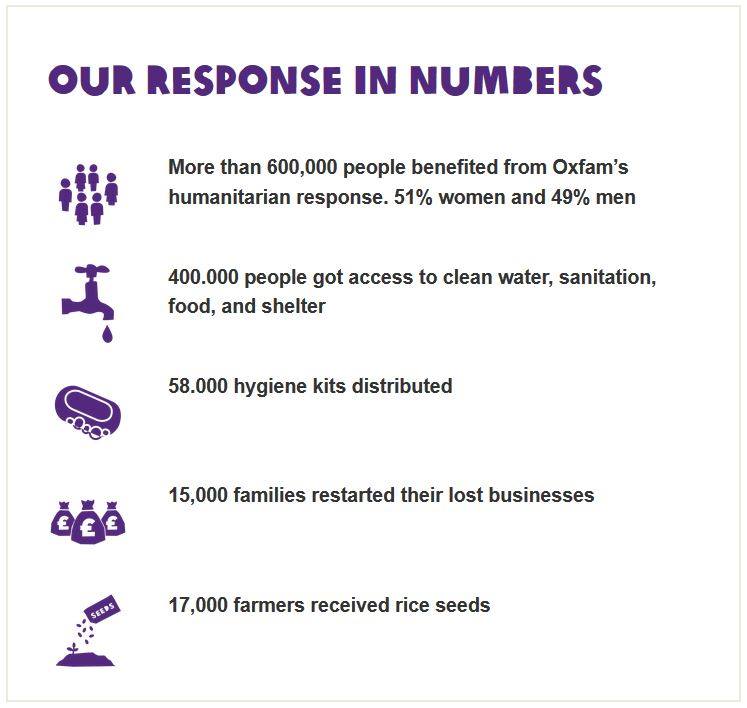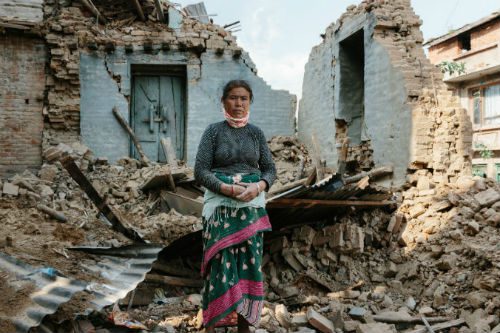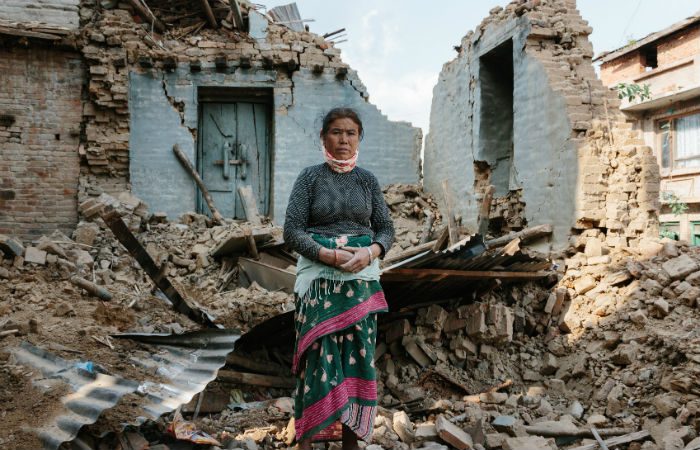Nepal earthquake
On Saturday 25 April 2015, a massive 7.6 magnitude earthquake struck Nepal. It was followed by hundreds of aftershocks and, just two weeks later, a second 6.7 magnitude earthquake hit. The earthquakes caused widespread destruction in 13 districts, including in the capital Kathmandu, and tragically left nearly 9,000 people dead.
An estimated 8 million people — more than a quarter of the population — were affected, and at least 600,000 houses were completely destroyed with another 280,000 damaged.
Oxfam and other organisations began work within hours of the first earthquake.
Thanks to an overwhelming response from our generous supporters and the Australian Government, Oxfam’s humanitarian aid response in Nepal was able to meet the immediate needs of earthquake survivors and to help communities recover.
Our response
Oxfam immediately responded by providing life-saving relief to communities in seven of the worst affected areas — Gorkha, Nuwakot, Sindhupalchok, Dhading and three districts in Kathmandu. This included providing emergency food items, drinking water and by setting up temporary shelters and emergency latrines.
In the first few days after the first earthquake hit, our priorities were to ensure that affected people had access to adequate humanitarian assistance and to prevent the outbreak of disease. Our staff in Nepal began to reach out to people in Kathmandu to assess needs. A team of technical experts from the surrounding area and beyond were mobilised.
During the first weeks, we distributed staple food supplies, alongside rice seeds and agricultural tools for farmers. Outside of Kathmandu Valley, our teams battled logistical challenges, such as blocked roads, to reach communities in remote areas. We managed to ship vital emergency supplies to Gorkha, near the epicentre of the quake, as well as providing tarpaulins, rice, water and sanitation equipment to other hard-hit rural districts.
In Kathmandu Valley, we provided clean water and sanitation facilities to earthquake survivors living in some of the worst hit districts. Our technical experts constructed water tanks and sanitation facilities in the temporary camps.
As the monsoon approached, we put in place stocks of chlorine tablets, tarpaulins and seed bags so that during the rains, people in isolated communities had access to safe water, shelter and could store their seeds to plant later in the year.
View some of our life-changing programs here:
Water for life
Building back better
Taking care of livestock
Modern tools for farmers

Our current response
Oxfam in Nepal works primarily for two core areas:
Sustainable Development Program
In order to alleviate poverty, provide rural communities with livelihood programs, mainstream gender, prepare for disaster and create awareness on hygiene and sanitation, Oxfam in Nepal works in 25 districts of Nepal.
We promote an integrated approach with partners and strategic allies to pilot Test sustainable practice and use this to influence policy and practices at local, national, regional and global level to create the systemic changes required to really benefit poor men and women in Nepal.
Humanitarian Program
Nepal is a disaster-prone country with where many natural disasters occur every year. The earthquakes of 2015 not only wiped out valuable lives of the people but also damaged infrastructure in both the cities and rural areas.
As a part of the Humanitarian Program, Oxfam works with local partners to prepare for disaster, with lawmakers to amend the Disaster Management bill and with communities to restore their livelihood and empower them to be resilient.
In order to save lives now and in the future with enhanced resilience for vulnerable women and men at risk of, or coping with, disasters. Oxfam’s humanitarian program focusses on water, sanitation and hygiene, shelter, food security and livelihood with gender and protection and disaster risk reduction as mainstreaming elements.
Oxfam’s work in Nepal before the earthquake
Prior to the earthquake, Oxfam had 60 staff based in Nepal. The country office is in Kathmandu, with field offices in Dedeldura and Surkhet districts. Humanitarian programs include reducing the risk of disasters in flood- prone areas, building the capability of water and sanitation expertise with our partners and reducing the risk of disasters in urban areas.
Oxfam and our partners also carry out work on food security and livelihoods as well as work focusing on the rights of women.
Oxfam has been responding to floods and landslides in Nepal since 1993 and includes earthquake scenario planning in all contingency plans.

Donate to Oxfam
If you would like to support Oxfam to ensure that our emergency response teams can rapidly address future emergencies, please make a donation today to our International Crisis Fund.
